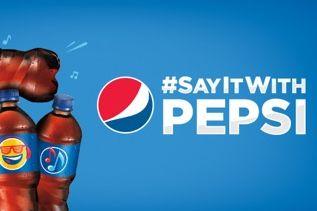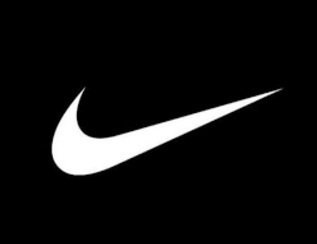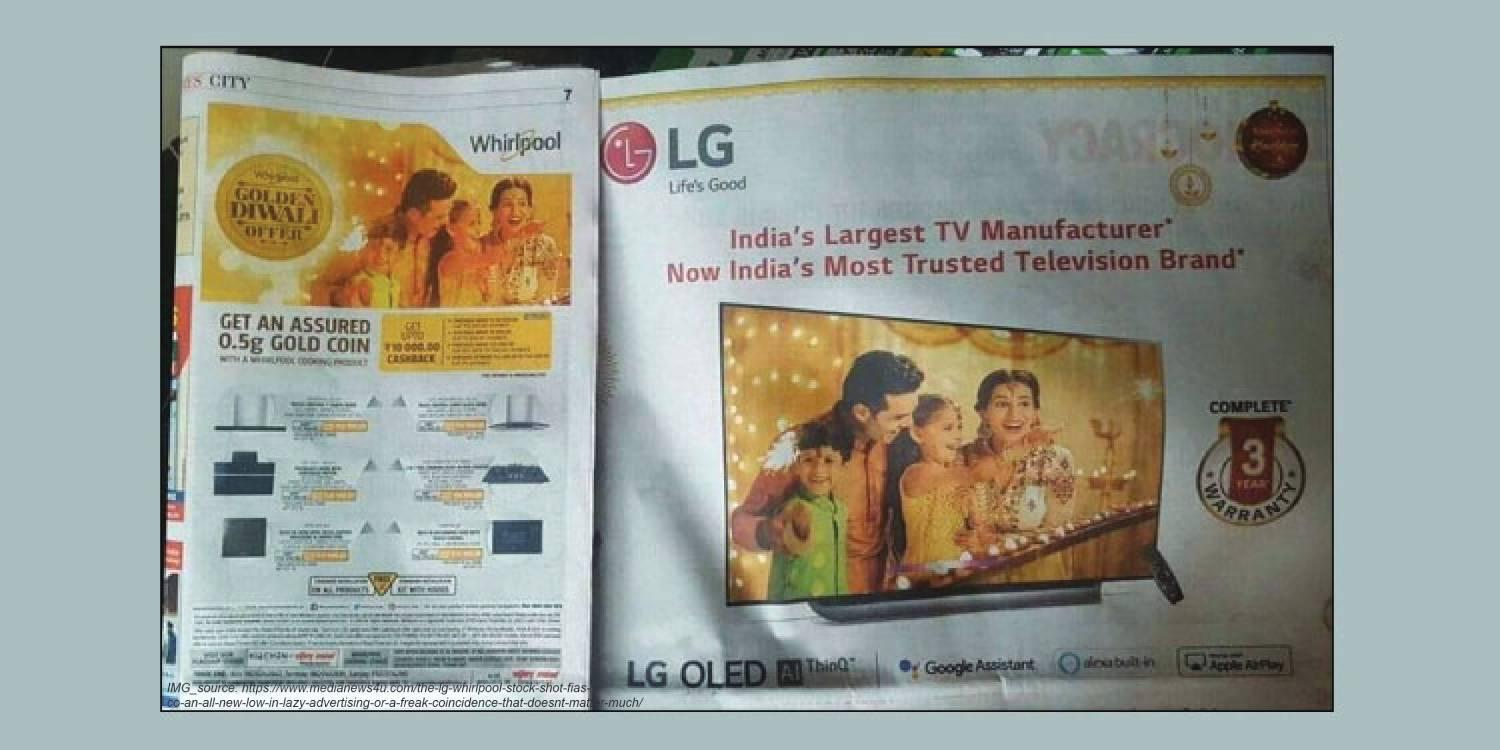-
 sujit.purkayasthaPosted 5 years agomy favourate brand is LG
sujit.purkayasthaPosted 5 years agomy favourate brand is LG
-
 sujit.purkayasthaPosted 5 years agojeevansathi ,com I will never forget as most of younger people of my relatives like .
sujit.purkayasthaPosted 5 years agojeevansathi ,com I will never forget as most of younger people of my relatives like .
-
 Buneshwor SharmaPosted 5 years agomy favourite Brand
Buneshwor SharmaPosted 5 years agomy favourite Brand
-
 Tapati PurkayasthaPosted 5 years agoLg electronics product are noce
Tapati PurkayasthaPosted 5 years agoLg electronics product are noce
-
 KondapalliNageswari Posted 5 years agoGood
KondapalliNageswari Posted 5 years agoGood
-
 Amit VyasPosted 5 years agoLG IS BEST
Amit VyasPosted 5 years agoLG IS BEST
-
 Subhankar MaityPosted 5 years agoI like LG more than other.
Subhankar MaityPosted 5 years agoI like LG more than other.
-
 sujit.purkayasthaPosted 5 years agoWhirlpool is also favourable
sujit.purkayasthaPosted 5 years agoWhirlpool is also favourable
-
 YOYO1234HAPPYPosted 5 years agoLG is good brand
Good
YOYO1234HAPPYPosted 5 years agoLG is good brand
Good
-
 sujit.purkayasthaPosted 5 years agoBoth lg and Whirlpool are of same standatd
sujit.purkayasthaPosted 5 years agoBoth lg and Whirlpool are of same standatd
-
 Tapati PurkayasthaPosted 5 years agoOur favourite brand
Tapati PurkayasthaPosted 5 years agoOur favourite brand
-
 sujit.purkayasthaPosted 5 years agoLg and whirlpool are both good brand
sujit.purkayasthaPosted 5 years agoLg and whirlpool are both good brand
-
 sujit.purkayasthaPosted 5 years agoWhirlpool is also good
sujit.purkayasthaPosted 5 years agoWhirlpool is also good
-
 Ajay shantaram DarekarPosted 5 years agoThe mess which was made could have been avoided and published smartly. As quoted by the experts, such ‘unhappy coincidences’ hamper the brand positioning in the minds of potential and existing consumers in the market. Budgetary compromises shouldn’t be made on ad creation while no so compromises are made on media buying.
Ajay shantaram DarekarPosted 5 years agoThe mess which was made could have been avoided and published smartly. As quoted by the experts, such ‘unhappy coincidences’ hamper the brand positioning in the minds of potential and existing consumers in the market. Budgetary compromises shouldn’t be made on ad creation while no so compromises are made on media buying.
-
 Anmol ThakurPosted 5 years agoWow Its Funny, But I Want To Say That LG Is Good But Whirlpools Are Far More Superior On The Higher End Brands For Kitchens.
Anmol ThakurPosted 5 years agoWow Its Funny, But I Want To Say That LG Is Good But Whirlpools Are Far More Superior On The Higher End Brands For Kitchens.
-
 Ajay shantaram DarekarPosted 5 years agoThe mess which was made could have been avoided and published smartly. As quoted by the experts, such ‘unhappy coincidences’ hamper the brand positioning in the minds of potential and existing consumers in the market. Budgetary compromises shouldn’t be made on ad creation while no so compromises are made on media buying
Ajay shantaram DarekarPosted 5 years agoThe mess which was made could have been avoided and published smartly. As quoted by the experts, such ‘unhappy coincidences’ hamper the brand positioning in the minds of potential and existing consumers in the market. Budgetary compromises shouldn’t be made on ad creation while no so compromises are made on media buying
-
 pavanichinni2@gmail.comPosted 5 years agoi like the LG brand products
pavanichinni2@gmail.comPosted 5 years agoi like the LG brand products
-
 sujit.purkayasthaPosted 5 years agoLg air conditioner is good and power saving
sujit.purkayasthaPosted 5 years agoLg air conditioner is good and power saving
-
 cheerla PurushothamPosted 5 years agoLG life's goid
cheerla PurushothamPosted 5 years agoLG life's goid
-
 cheerla PurushothamPosted 5 years agoLG product Led tv
cheerla PurushothamPosted 5 years agoLG product Led tv
-
 abdul rahman bin husseinPosted 5 years agoamazing
abdul rahman bin husseinPosted 5 years agoamazing
-
 Tapati PurkayasthaPosted 5 years agoBoth brands are favourite. We have LG microwave , a.c etc. Similarly Whirlpool washing machine and also fridge. Both are good
Tapati PurkayasthaPosted 5 years agoBoth brands are favourite. We have LG microwave , a.c etc. Similarly Whirlpool washing machine and also fridge. Both are good
-
 sujit.purkayasthaPosted 5 years agoMy favourite brand
sujit.purkayasthaPosted 5 years agoMy favourite brand
-
 sujit.purkayasthaPosted 5 years agoLg is good brand and Whirlpool is also not bad
sujit.purkayasthaPosted 5 years agoLg is good brand and Whirlpool is also not bad
-
 Tapati PurkayasthaPosted 5 years agoWe are lgian and like very much
Tapati PurkayasthaPosted 5 years agoWe are lgian and like very much
-
 sujit.purkayasthaPosted 5 years agojeevansathi is a best brand
sujit.purkayasthaPosted 5 years agojeevansathi is a best brand
-
 sujit.purkayasthaPosted 5 years agoVery good ads
sujit.purkayasthaPosted 5 years agoVery good ads
-
 Tapati PurkayasthaPosted 5 years agoGenuine brands
Tapati PurkayasthaPosted 5 years agoGenuine brands
-
 sujit.purkayasthaPosted 5 years agoThese ads are good
sujit.purkayasthaPosted 5 years agoThese ads are good
-
 sujit.purkayasthaPosted 5 years agoGood
sujit.purkayasthaPosted 5 years agoGood
-
 Tapati PurkayasthaPosted 5 years agoBoth thr lg anf whirlpoo lare favourite to me .
Tapati PurkayasthaPosted 5 years agoBoth thr lg anf whirlpoo lare favourite to me .
-
 mukeshPosted 5 years agonyc
mukeshPosted 5 years agonyc
-
 Tapati PurkayasthaPosted 5 years agoWhirlpool and are of equal standard
Tapati PurkayasthaPosted 5 years agoWhirlpool and are of equal standard
-
 AshokPosted 5 years agoMy favorate brand is LG
AshokPosted 5 years agoMy favorate brand is LG
-
 Arihant Posted 4 years agogood to find the mistake and rectfy it
Arihant Posted 4 years agogood to find the mistake and rectfy it
-
 Ponnuri Ganesh Durgarao Posted 4 years agoMy favourite
Ponnuri Ganesh Durgarao Posted 4 years agoMy favourite
-
 FRANCIS ONYEAMA Posted 4 years agoMy favorite electronics partner lg
FRANCIS ONYEAMA Posted 4 years agoMy favorite electronics partner lg
-
 Om Prakash DubeyPosted 4 years agoSome times such types of incidents happens due to internet and time I had to come with a ad and using the stock photos. The general consumers are even not able to make it out except few and percentage wise they are negligible.
I am not telling that that was not a blunder mistake from profesional point of view but still those ads were eye catchers.
I like both LG and Whirlpool both and use their products.
Om Prakash DubeyPosted 4 years agoSome times such types of incidents happens due to internet and time I had to come with a ad and using the stock photos. The general consumers are even not able to make it out except few and percentage wise they are negligible.
I am not telling that that was not a blunder mistake from profesional point of view but still those ads were eye catchers.
I like both LG and Whirlpool both and use their products.
-
 Diksha BohraPosted 4 years agoLG is great
Diksha BohraPosted 4 years agoLG is great
-
 Himanshu baidyaPosted 4 years agoLG is leading brand of India I also have two LG TV that work great
Himanshu baidyaPosted 4 years agoLG is leading brand of India I also have two LG TV that work great
-
 sujit.purkayasthaPosted 4 years agoLg is best and ready to replace the product if necessary and this happened in my case fur to smell in air conditioner.great
sujit.purkayasthaPosted 4 years agoLg is best and ready to replace the product if necessary and this happened in my case fur to smell in air conditioner.great
-
 sujit.purkayasthaPosted 4 years agoI have use whirlpools product mainly washing machine
sujit.purkayasthaPosted 4 years agoI have use whirlpools product mainly washing machine
-
 sujit.purkayasthaPosted 4 years agoLg brand is now becoming popular .
sujit.purkayasthaPosted 4 years agoLg brand is now becoming popular .
-
 sujit.purkayasthaPosted 4 years agoI am happy for buying lg air conditioner.
sujit.purkayasthaPosted 4 years agoI am happy for buying lg air conditioner.
-
 Aaftab khanPosted 4 years agoLG products are also goods
Aaftab khanPosted 4 years agoLG products are also goods
-
 sujit.purkayasthaPosted 4 years agoThe ad for every product is important so the company make ad .I like the ad to verify the contents and find the difference. And a little difference will be advantageous .The case of lg over Whirlpool is slightly modern.
sujit.purkayasthaPosted 4 years agoThe ad for every product is important so the company make ad .I like the ad to verify the contents and find the difference. And a little difference will be advantageous .The case of lg over Whirlpool is slightly modern.
-
 JiteshPosted 4 years agoLG is company very trusted
JiteshPosted 4 years agoLG is company very trusted
-
 Hari prasadPosted 4 years agomess happens always
Hari prasadPosted 4 years agomess happens always
-
 Manisha BishtPosted 4 years agoLG is always my favourite
Manisha BishtPosted 4 years agoLG is always my favourite
-
 sujit.purkayasthaPosted 4 years agoBoth lg and whirlpool are favourate brand. In our family both the rand is used. As lg microwave is very good and we are using during last 15 years. Similarly we are using whirlpool washing machine since long and functioning well. Lg air conditioner also used since 3 years are good. So I think both company are good.
sujit.purkayasthaPosted 4 years agoBoth lg and whirlpool are favourate brand. In our family both the rand is used. As lg microwave is very good and we are using during last 15 years. Similarly we are using whirlpool washing machine since long and functioning well. Lg air conditioner also used since 3 years are good. So I think both company are good.
-
 FgPosted 4 years agoLG is a reputed brand.
FgPosted 4 years agoLG is a reputed brand.
-
 Paluri RamchanderPosted 4 years agoGood brand
Paluri RamchanderPosted 4 years agoGood brand
-
 sujit.purkayasthaPosted 4 years agoNot only in India ,consumers attracted by company in all over the world through advertising. Similarly these company LG and Whirlpool products are continuously updating the products every years.Hence consumers will know from and.
sujit.purkayasthaPosted 4 years agoNot only in India ,consumers attracted by company in all over the world through advertising. Similarly these company LG and Whirlpool products are continuously updating the products every years.Hence consumers will know from and.
-
 sujit.purkayasthaPosted 4 years agoThe reasons of similar types of image in the ad of the two giant brand do not like to miss the consumers . Really a simple thinking in choosing an image by the marketing professional without taking risk.
sujit.purkayasthaPosted 4 years agoThe reasons of similar types of image in the ad of the two giant brand do not like to miss the consumers . Really a simple thinking in choosing an image by the marketing professional without taking risk.
-
 Mazhar khanPosted 4 years agoLG is best
Mazhar khanPosted 4 years agoLG is best
-
 ArbazkhanPosted 4 years agoPosted 1 year ago
LG is better than any other
Because it is a key feature of LG
So I believe on LG
ArbazkhanPosted 4 years agoPosted 1 year ago
LG is better than any other
Because it is a key feature of LG
So I believe on LG
-
 sufyan khanPosted 4 years agoMy favroite brand is lg
sufyan khanPosted 4 years agoMy favroite brand is lg
-
 Harshit GargPosted 4 years agoHi
Harshit GargPosted 4 years agoHi
-
 sujit.purkayasthaPosted 4 years agoI have experienced one year ago regarding LG brand .Their marketing head has visited my residence from a location about 450 km in road and verified the product and agreed to replace my product and ultimately replaced the new product after one year.Thank to the company.
sujit.purkayasthaPosted 4 years agoI have experienced one year ago regarding LG brand .Their marketing head has visited my residence from a location about 450 km in road and verified the product and agreed to replace my product and ultimately replaced the new product after one year.Thank to the company.
-
 sujit.purkayasthaPosted 4 years agoLg is a best brand in the industry now a days
sujit.purkayasthaPosted 4 years agoLg is a best brand in the industry now a days
-
 DiyaPosted 3 years agoLG and whirlpool are both great electronic but as looking from more popular brand I say LG because I have seen it and bought it more than whirlpool
DiyaPosted 3 years agoLG and whirlpool are both great electronic but as looking from more popular brand I say LG because I have seen it and bought it more than whirlpool
-
 DiyaPosted 3 years agoI am enjoying LG fridge and whirlpool AC
DiyaPosted 3 years agoI am enjoying LG fridge and whirlpool AC
-
 Girish KhoslaPosted 3 years agoIt’s an unhappy coincidence. When two brands inadvertently use the same visual has nothing lazy about it. Both the brands didn’t know if either one was doing something similar. They should not try and save costs since they’re anyway spending a fortune on buying space. Ideally they should not use a stock image but get a professional photoshoot done. The problem arises when these stock image companies sell the same photograph to both the parties.
MNC’s like these are emphasizing more on media than creativity. Company heads are spending a lot on media, who aren’t lazy but are short-sightedly giving a heads-up on using stock images. A photoshoot today usually takes half a day and it cannot be a budgetary dispute.
Moreover, it confuses the audiences. You get lucky if a consumer doesn’t get to see both the advertisements.
Girish KhoslaPosted 3 years agoIt’s an unhappy coincidence. When two brands inadvertently use the same visual has nothing lazy about it. Both the brands didn’t know if either one was doing something similar. They should not try and save costs since they’re anyway spending a fortune on buying space. Ideally they should not use a stock image but get a professional photoshoot done. The problem arises when these stock image companies sell the same photograph to both the parties.
MNC’s like these are emphasizing more on media than creativity. Company heads are spending a lot on media, who aren’t lazy but are short-sightedly giving a heads-up on using stock images. A photoshoot today usually takes half a day and it cannot be a budgetary dispute.
Moreover, it confuses the audiences. You get lucky if a consumer doesn’t get to see both the advertisements.
-
 JashandeepPosted 3 years agoOkkk
JashandeepPosted 3 years agoOkkk
-
 Ravi LPosted 3 years agoMy favorite Brand FforFREE
Ravi LPosted 3 years agoMy favorite Brand FforFREE
-
 sujit.purkayasthaPosted 3 years agoServices of lg is better so far I have experienced
sujit.purkayasthaPosted 3 years agoServices of lg is better so far I have experienced
-
 RameshPosted 3 years agoits my favorite brand
RameshPosted 3 years agoits my favorite brand
-
 sujit.purkayasthaPosted 3 years agoLG is a global company.
sujit.purkayasthaPosted 3 years agoLG is a global company.
-
 Mrs rafiPosted 3 years agoI like the brand whirlpool and it’s a leading brand too but it’s a big blunder with both the ads
Mrs rafiPosted 3 years agoI like the brand whirlpool and it’s a leading brand too but it’s a big blunder with both the ads
-
 sujit.purkayasthaPosted 3 years agoLG is best brand now a days
sujit.purkayasthaPosted 3 years agoLG is best brand now a days
-
 Ravi JaiswalPosted 2 years agoLG is my favourite brand
Ravi JaiswalPosted 2 years agoLG is my favourite brand
-
 neha kumariPosted 2 years agomy favourite brand.
neha kumariPosted 2 years agomy favourite brand.
-
 SuhaniPosted 2 years agoNice
SuhaniPosted 2 years agoNice
-
 dhanraj singh gurjarPosted 2 years agoSuper
dhanraj singh gurjarPosted 2 years agoSuper
-
 ASHISH MOREPosted 2 years agoMeaningful content and address is required for sizeable netizens
ASHISH MOREPosted 2 years agoMeaningful content and address is required for sizeable netizens
-
 ShamnaPosted 2 years agoIt's very relevant and innovative
ShamnaPosted 2 years agoIt's very relevant and innovative
-
 Jolet Joy Posted 1 year agoMy favourite is Whirlpool.
Jolet Joy Posted 1 year agoMy favourite is Whirlpool.
-
 IrfanaPosted 1 year agoLg is a great brand
IrfanaPosted 1 year agoLg is a great brand
-
 Rajeev PasiPosted 1 year agoNice
Rajeev PasiPosted 1 year agoNice
-
 Rajeev PasiPosted 1 year agoNice
Rajeev PasiPosted 1 year agoNice
-
 Amit Jaggi Posted 11 months agoReally Surprised to See Such Renowned Brands making Such Mistakes just to save some Money on Marketing
Amit Jaggi Posted 11 months agoReally Surprised to See Such Renowned Brands making Such Mistakes just to save some Money on Marketing
AD CHIVES
Take a walkthrough of our AD Chives and revisit some of the most impactful advertisements of all time! This collection will bring back so many memories!
Adchives: Classic ads we still enjoy watching and sharing
Posted 5 years ago
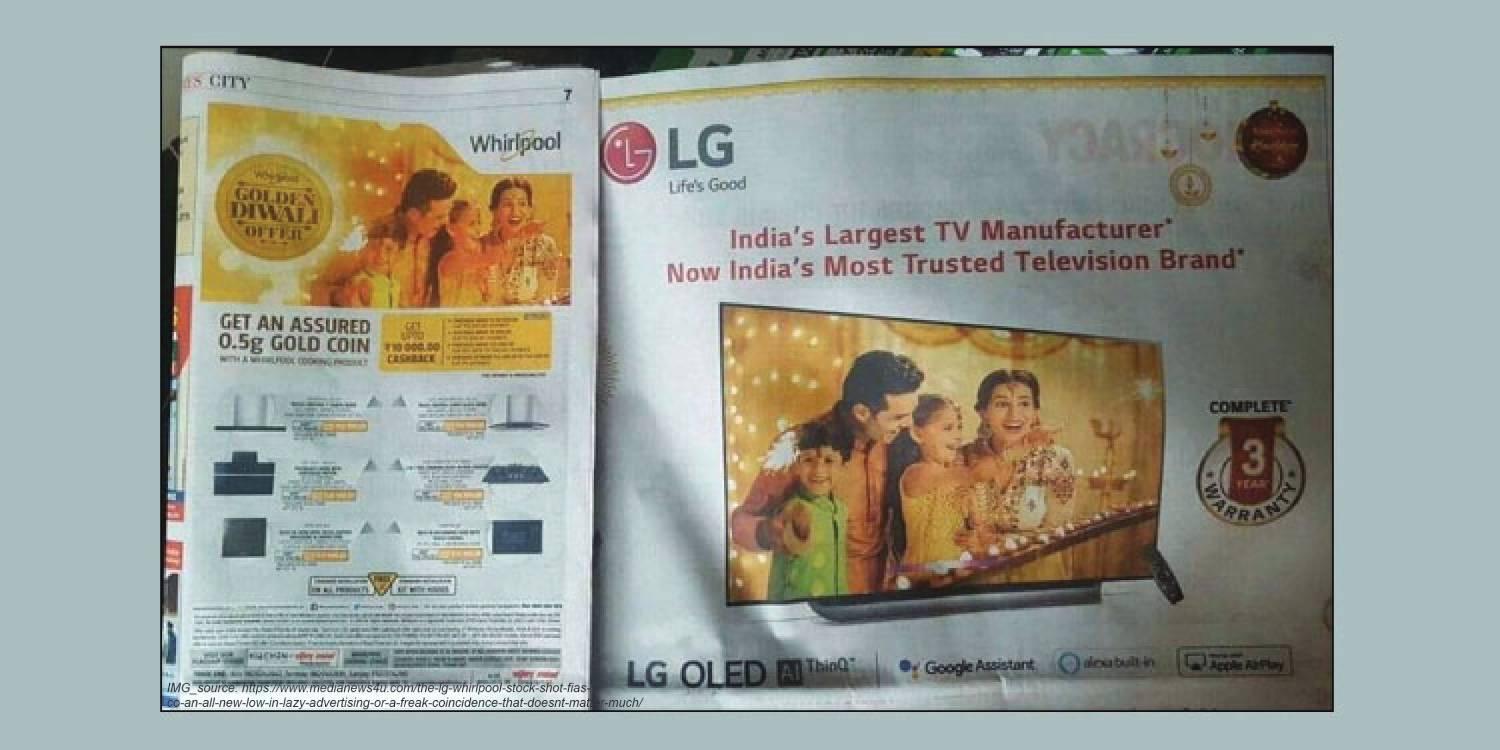
This festive season the shortcut used by these two leading brands in India, LG and Whirlpool, has made both these brands land in dilemma between marketing professionals as well as the consumers.
There are two critical questions to be asked when such a blunder takes place are :
- Are the marketing heads not willing to spend enough on getting a professional photoshoot done while spending so much on buying space in leading newspapers ? OR
- Are advertisers in agencies holding themselves back due to time crunch or festive time boundaries ?
Let’s Find out
WHAT ACTUALLY HAPPENED
Both these brands released huge festive season advertisements in the leading newspaper -The Times of India. The brands used a stock image of a family of four ( young parents and two smiling children) spending a joyous moment on an auspicious occasion. The Whirlpool ad headline read ‘Golden Diwali Offer’ with an attached strapline “Get an assured 0.5Kg Gold Coin”. Whereas the LG ad went like ‘India’s Largest TV Manufacturer, Now India’s Most Trusted Television Brand’. Interesting Fact : Both the brands unfortunately used the same family stock image. With the inexcusable blunder which both these brands caused whether it be due to lack of budget or time crunch to market the ad or simply ignorance, everything was at a standstill.
One would be lucky if one didn’t see and register both ads but considering both the sides have marketing planners and media buyers, keeping a track of their competitor’s patterns and past media buys, and also not to forget the same medium and platform , this was a huge risk taken.
SURPISED? HISTORY HAS REPEATED ITSELF
These two are not the only brands which muddled up. MarathiShaadi.com and Jeevansathi.com too published print ads a while back using similar stock images, giving the twitter community many more reasons to diss the brands.
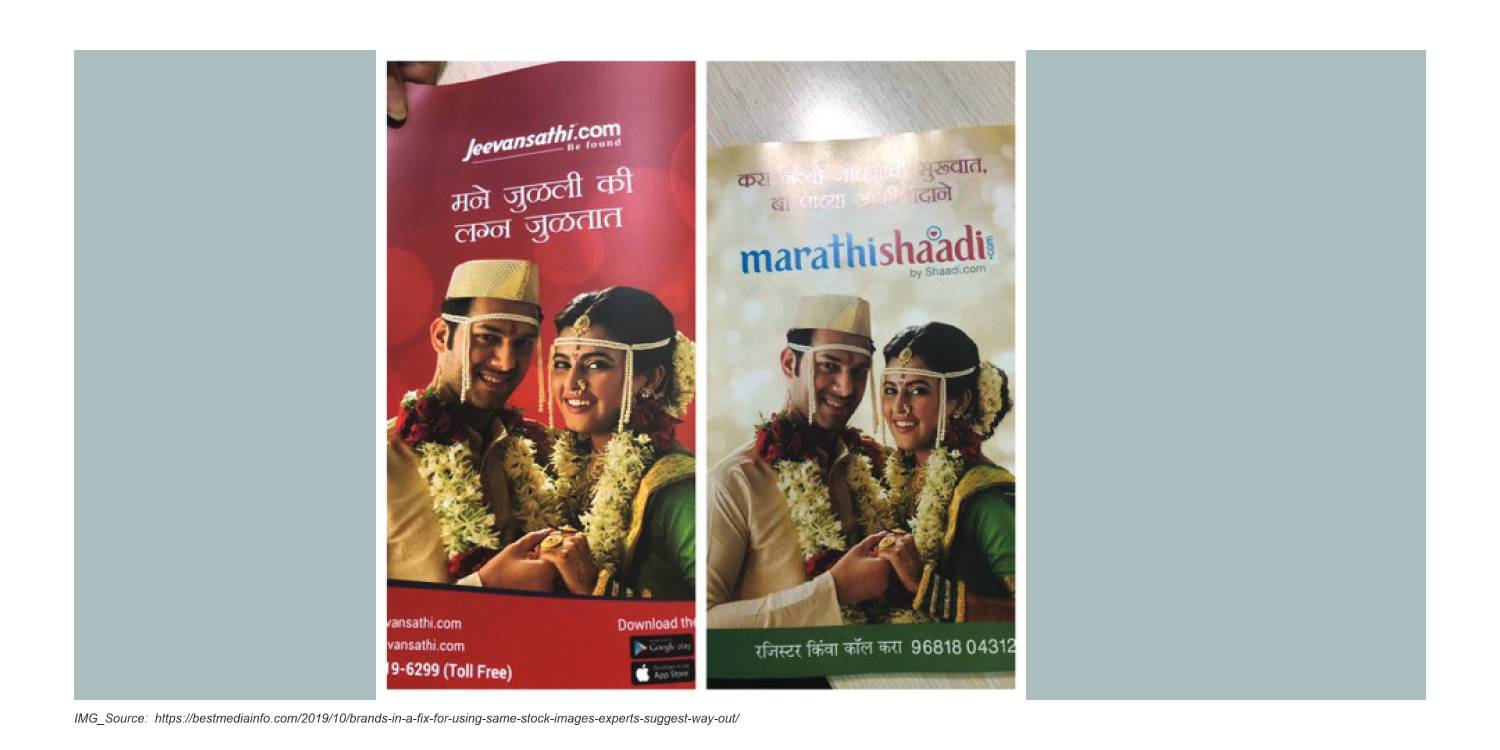
It’s not so surprising because this embarrassing fiasco happened more than a decade back in 2013 when the Congress government in Maharashtra came out with a series of “Bharat Nirman” ads. Nevertheless, in one of the creatives, the celebrated long standing party of the India used a remarkably similar image as the Bharatiya Janta Party to showcase it’s ‘Antyodaya’ campaign
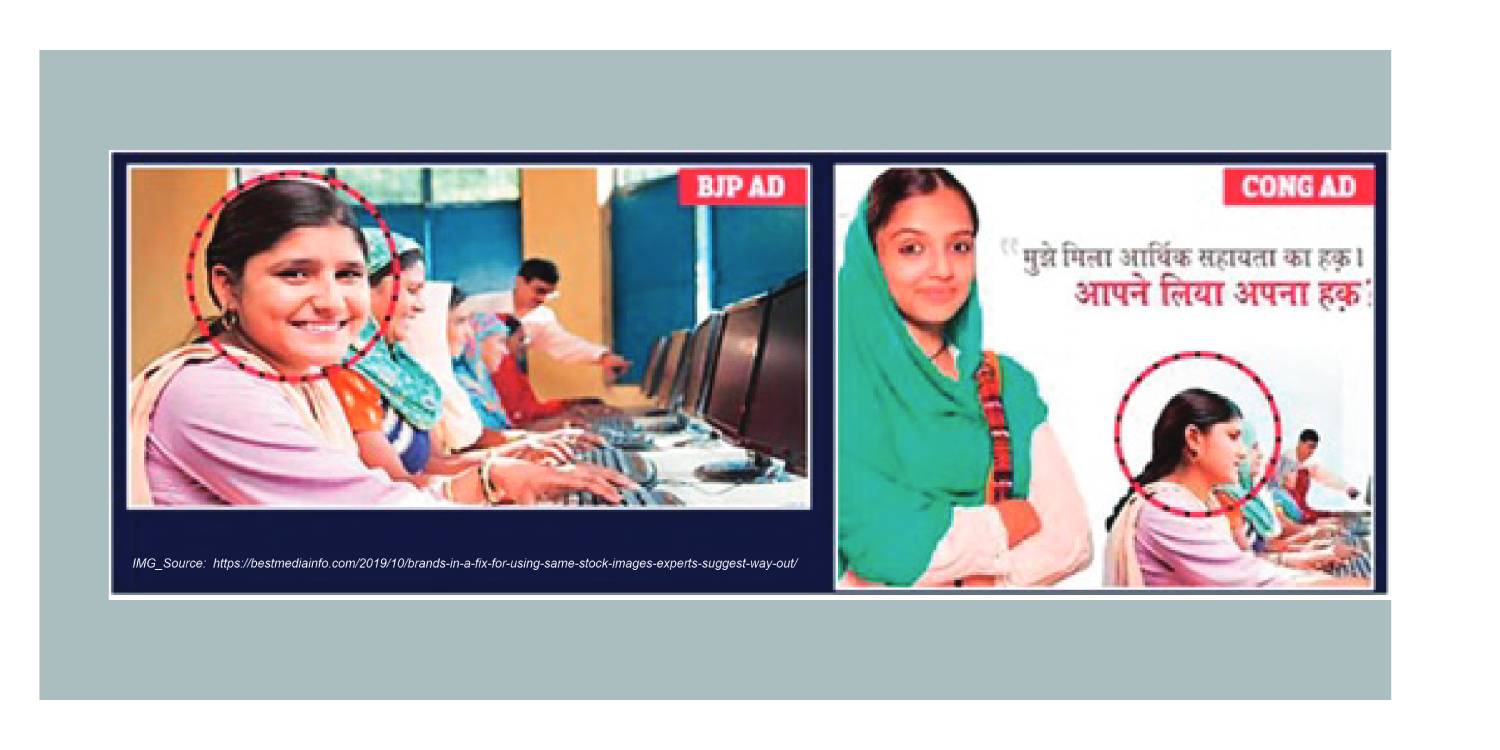 TWEETS : WHAT PEOPLE HAVE TO SAY –
TWEETS : WHAT PEOPLE HAVE TO SAY –
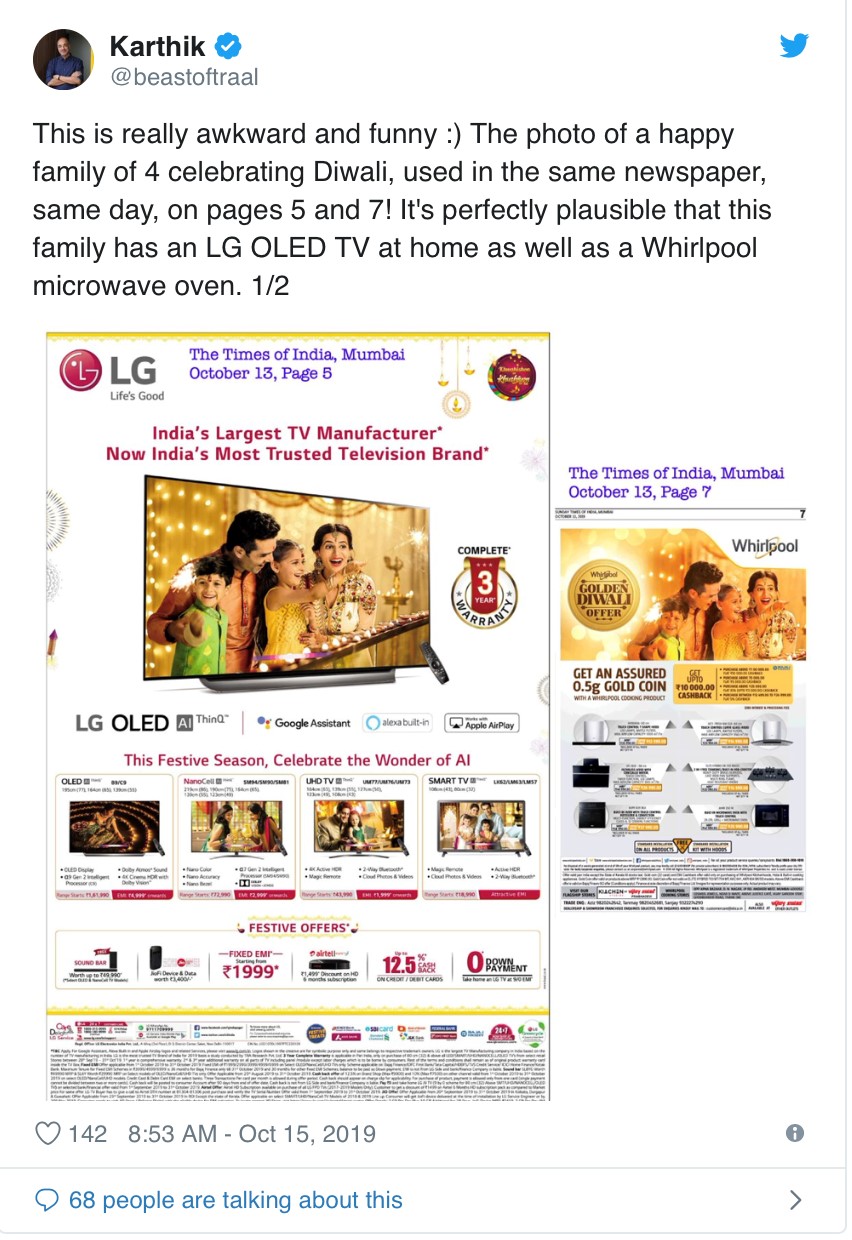
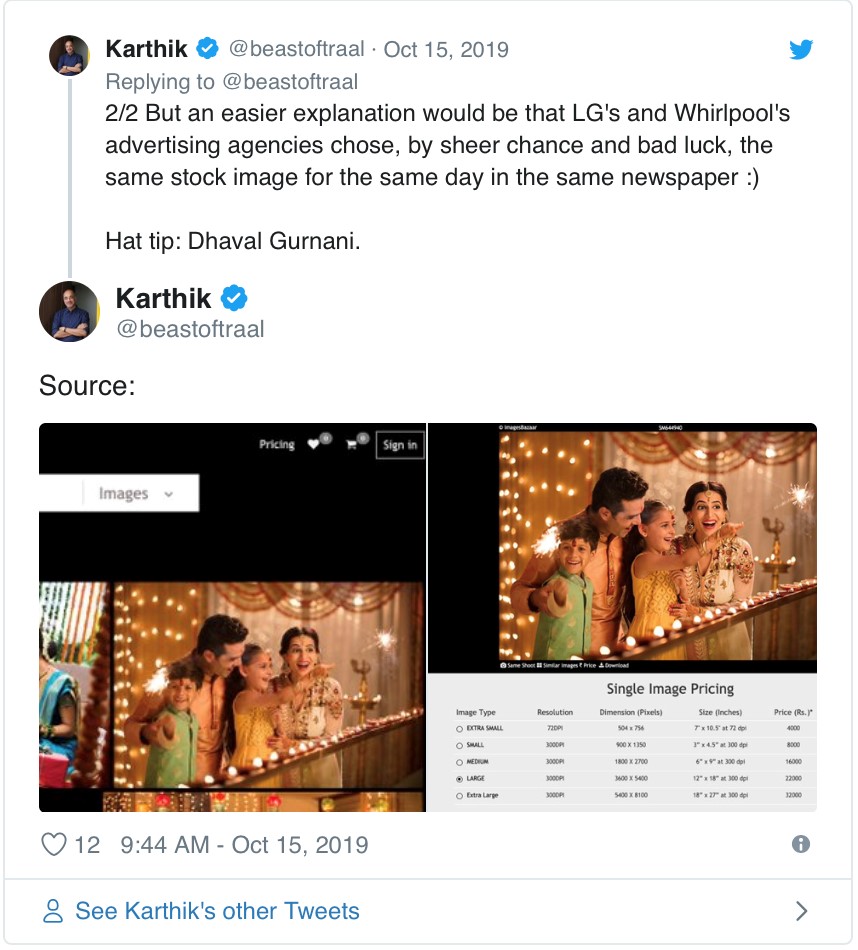
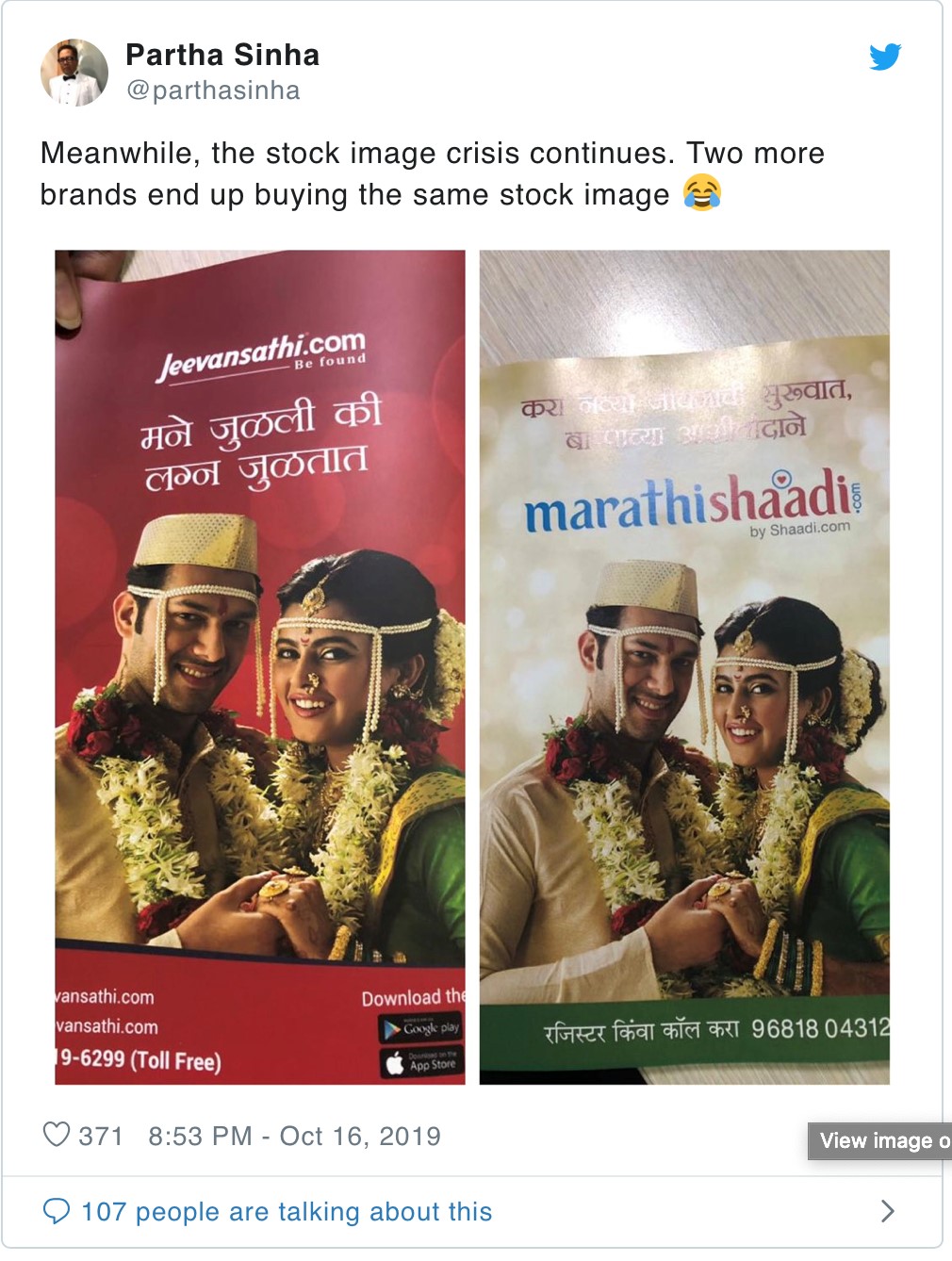
OUR PERSPECTIVE:
What benefit does your brand gain if you give other marketers and advertisers an open chance to criticize and laugh at you? Making a mockery out of yourself on such big platforms is not publicity in form. The leading home manufacturer brands of India made a laughing stock by buying those stocks from the internet. You as a consumer, would position these brands much lower than what it originally was.
These gigantic MNC’s which rule the Indian market should preferably use original images or do damage control once such a thing happens. Considering past episodes which have taken place , such risks should be avoided at an cost. This is a true example of how shortcuts never take you a long way.
Let’s see what the experts have to say about this.
Shivjeet Kullar (Founder & CEO NFX Digital)
It’s an unhappy coincidence. When two brands inadvertently use the same visual has nothing lazy about it. Both the brands didn’t know if either one was doing something similar. They should not try and save costs since they’re anyway spending a fortune on buying space. Ideally they should not use a stock image but get a professional photoshoot done. The problem arises when these stock image companies sell the same photograph to both the parties.
MNC’s like these are emphasizing more on media than creativity. Company heads are spending a lot on media, who aren’t lazy but are short-sightedly giving a heads-up on using stock images. A photoshoot today usually takes half a day and it cannot be a budgetary dispute.
Moreover, it confuses the audiences. You get lucky if a consumer doesn’t get to see both the advertisements.
Conclusion :
The mess which was made could have been avoided and published smartly. As quoted by the experts, such ‘unhappy coincidences’ hamper the brand positioning in the minds of potential and existing consumers in the market. Budgetary compromises shouldn’t be made on ad creation while no so compromises are made on media buying.
18
Likes /7
FavouritesLeave a comment
Your comment submission is in progress....please wait...
Thank You. Your comment is successfully posted.
Disclaimer: Repetitive or profane comments will be deleted by the moderator
MORE FROM AD CHIVES
-
The story behind Nike’s famous, Just Do it slogan
Posted 9 years ago314 Likes / 145 Favourites / 247 comments
-
Lazy Advertising Or Bad Marketing? The Lg-whirlpool Fiasco Expert Review On How To Avoid This
Posted 5 years ago18 Likes / 7 Favourites / 81 comments




